Preservation IPA: The Road to Rivitalization
The Historic Use of the Former Maine Spinning Mill
The Maine Spinning Company, organized in 1904, was originally located at North Channel/Dodge Street in Skowhegan. The new mill was built on Skowhegan Island in 1921-22 and occupied in 1922. At its height, in the 1940s-1970s, the mill employed 300 people and produced 1.5 – 2 million pounds of yarn for markets throughout the United States.
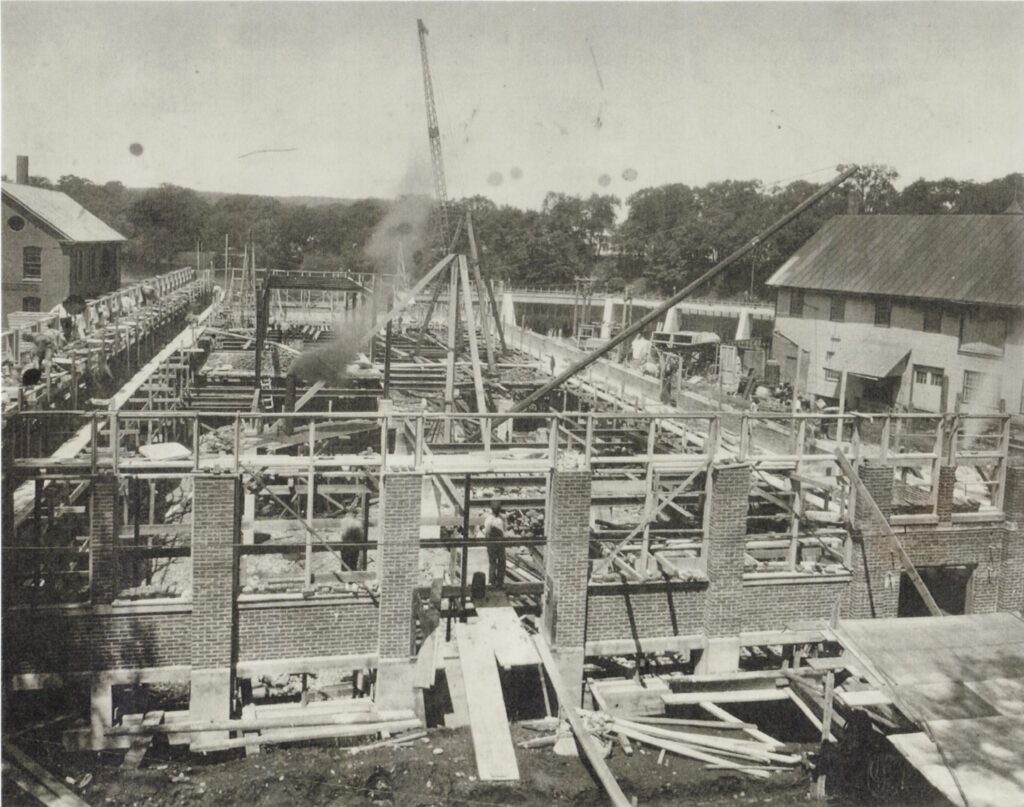
Over the decades, as a result of several mergers and acquisitions, the Maine Spinning Company evolved into the Solon Manufacturing Co., which operated in the building until the mill closed in the fall of 2005, due to foreign competition.
Since 2005, the building has largely stood vacant. Most recently, the building, now in some disrepair, served as an outlet for the Chapter 11 Discount Stores which closed in 2019.
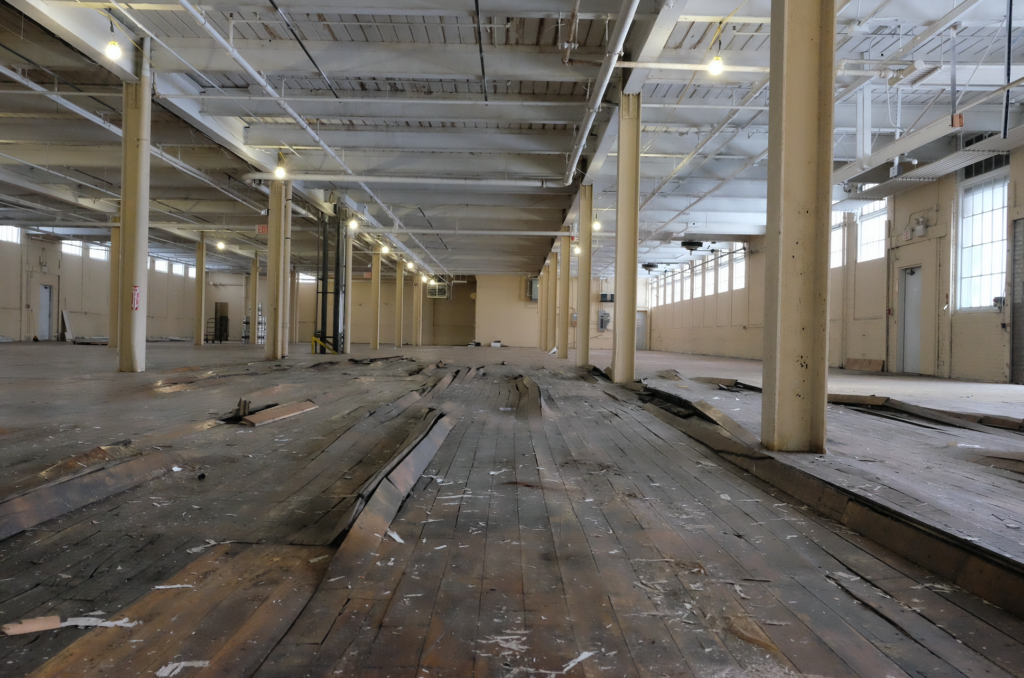
The Maine Spinning Company building is the only remaining industrial structure on Skowhegan Island and, when it was built in 1922, it was one of the first industries in town to be powered entirely by electricity from the Skowhegan Electric Works, located just behind the building. This building demonstrates the enormous change that was taking place in Skowhegan at the end of the second industrial revolution, when industry was moving from water to electric power; the building’s amenities demonstrate how workers’ needs were now being considered and improved. It was a significant building for the community at that time, because it was fully industrialized and employed a large number of the town’s inhabitants. People today still recall their relatives having worked there.
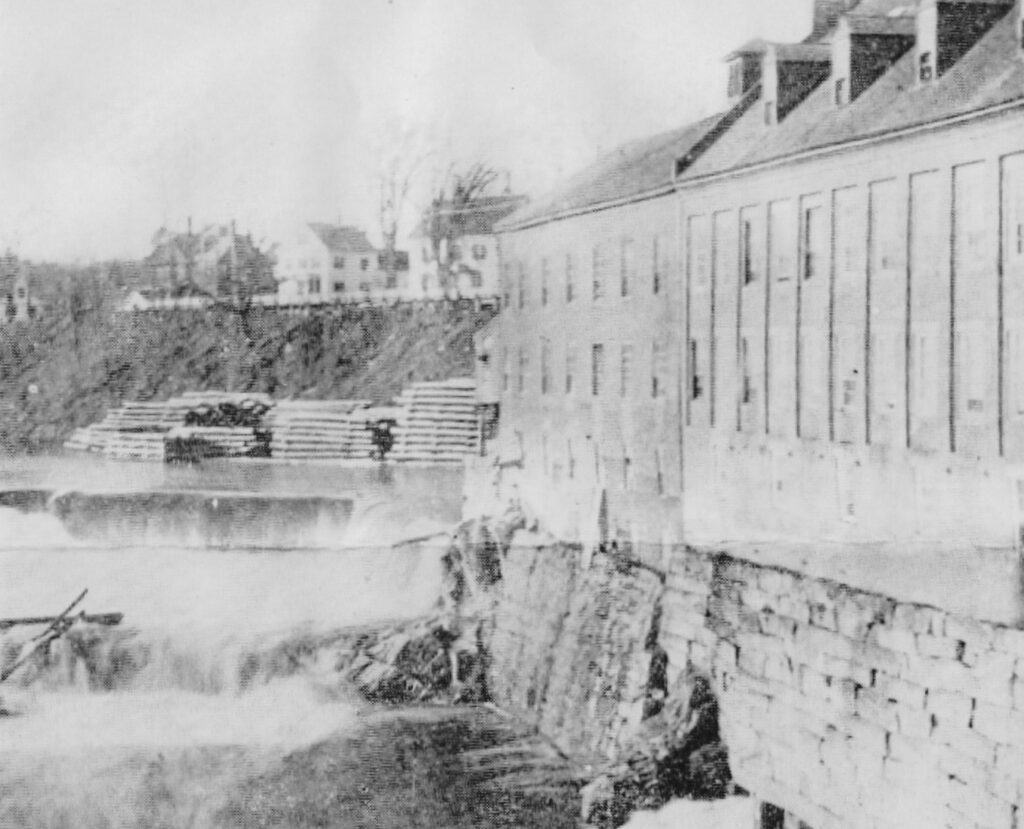
In 1922, Maine Spinning Company was a pioneer in the extraordinary change in how textiles were manufactured in rural Maine. In urban centers across the country, the advances of mass production were now being amplified through the addition of new energy technologies like electricity, as well as the incorporation of new approaches to management and labor. These kinds of advances were already being adopted in Detroit’s auto industry by this time; however, this new mill for textile manufacturing was cutting-edge in rural Maine.
The Maine Spinning Company was established at Skowhegan Falls in 1904. Skowhegan was the Native American name for both the 12.5 acre island and the adjacent waterfall, located on the Kennebec River in mid-Maine, and today the island and waterfall are in the heart of downtown Skowhegan, Maine.

The original factory was a repurposed building, constructed of wood, located on Dodge Street on the banks of the Kennebec River directly across from the current site. The factory offered few elements of comfort for workers—no water, no heat, no restrooms, and no screens on the windows; consequently, workers froze in the winter, sweltered and were besieged by insects in the summer. The spinning mechanisms, run by water power and leather belting, were difficult to operate and produced low yields. It is thought that the original building either burned or washed away in a flood. More research is needed to determine the exact fate of the original factory building. None of the Dodge Street buildings remain today and the street itself exists only as an alley.
With the needs of its workers in mind, little expense was spared with the construction of the new building, at a cost for equipment and machinery of $648,000, plus stock necessary to operate at a cost of $300,000. The building was designed by Lockwood, Greene & Co., Architects of Boston, and constructed by the Otto Nelson Company. A number of Lockwood, Greene & Co. works are listed on the U.S. National Register of Historic Places.
The brick and concrete building originally had three floors, each with approximately 17,000 sq. ft. of usable space with two elevators, one at each end of the building, reaching all floors; there is also a full basement and loading docks for the first floor. An additional 10,000 sq. ft. floor on the roof was added later. The building featured an artesian well in its basement (no small feat drilling through the ledge of the Island), two bathrooms on each of its floors, double- glazed windows with screens for both worker health and improved efficiency and it featured steam heat with automatic heat control and complete automatic humidification, as well as full fire protection — all revolutionary features for rural Maine.

For the small town of Skowhegan, this building represented an entirely new way of recognizing employees’ needs and of mechanizing equipment in revolutionary ways. It was one of the first buildings on the island to use hydroelectric generation from the power of the river while other industrial plants on the Island ran on water power, using water wheels and leather belting to run their machinery. It was built by local contractors and was a major source of pride.The original factory closed on a Saturday and the workforce reported to work in the new structure the following Monday.
The historic significance of this new mill to the town was reflected in the lavish opening festivities. A grand opening celebration was prepared on that Saturday night in the middle of February. The second floor was used as a grand ballroom with Murphy’s Orchestra, direct from Boston, playing for invited guests. Each employee could invite one guest, greatly increasing attendance. The third floor served as a banquet room and a major dinner was prepared by J.H. Hanson, the chef of the Oxford Hotel, assisted by two chefs from Lewiston, Maine, on a bank of electric ranges set up behind a curtain and served by forty of the young ladies from the community. The new factory was open for public viewing on Sunday for 1,500 attendees to considerable acclaim. Murphy’s Orchestra played throughout the day.
At Maine Spinning Company’s start in their new home, a team of professional Syrian weavers was brought to Skowhegan from Lawrence, Massachusetts, to teach the local employees how to operate the new mechanized equipment. The Syrian workers had all previously worked at various jobs in a “Bradford System” worsted spinning plant. The Bradford System (also known as the English Worsted Yarn Count System or spinning count or Bradford count) is a method to assess the quality of wool. The Syrian workers were brought in to teach the local employees how to spin using the latest techniques. Working with electric powered machinery to create yarns in high volume required new skills and changed how Skowhegan workers viewed their profession and their abilities. Raw materials, imported from around the world, were spun into many different types of yarns that were eventually sold throughout America. Wools came from all parts of the British Empire and the Americas; mohair from Texas, Turkey, Cape Colony and West Africa; cashmere from India; alpaca from Peru; camel’s hair from Mongolia; China lamb’s wool from Tibet; and, angora rabbits’ hair from France. During the next ten years, as the local workers mastered the new equipment and operation, the Syrian weavers gradually returned to Lawrence, MA.
At its height, in the 1940s-1970s, the mill employed 300 people and produced 1.5 – 2 million pounds of yarn for markets throughout the United States. By 1941, the spinning mill had operated 37 years with night and day shifts. At this time, the mill was looked upon in the trade as probably the most versatile mill in the entire industry, making worsted yarns of every conceivable purpose for which worsted yarns are used.

In recent years, Skowhegan, Maine, has assumed an increasingly prominent role among Maine communities working to foster the growth of sustainable agriculture in the State — first, by the creation, in 2007, of the Kneading Conference, whose goal was to encourage the greater use of locally grown and heritage grains suitable for our northern climate. This soon led to the creation of the Maine Grain Alliance, and the conversion of the former Somerset County Jail into a grist mill to serve local grain growers, which now operates successfully as the Maine Grains Grist Mill. Maine Grains also works closely with the Maine Organic Farmers and Gardeners Association (MOFGA) to support local farms as they reorient to organic cultivation and to bring more acreage into the sustainable local cultivation of food products.

One of Bigelow Brewing Company’s corporate principles is to use locally produced agricultural goods in our brewing process and restaurant. Every beer that we produce is made with malts that are grown in Maine; fruits and vegetables are from local farmers. We were recently ranked by the American Brewers Association as the 48th fastest-growing small independent brewery in the United States, and Bigelow Brewing Company received a 2019 Governor’s Award for Business Excellence.
As the new owner of the Maine Spinning Company building, we are ready to begin the restoration work necessary to bring this historic building back to life.
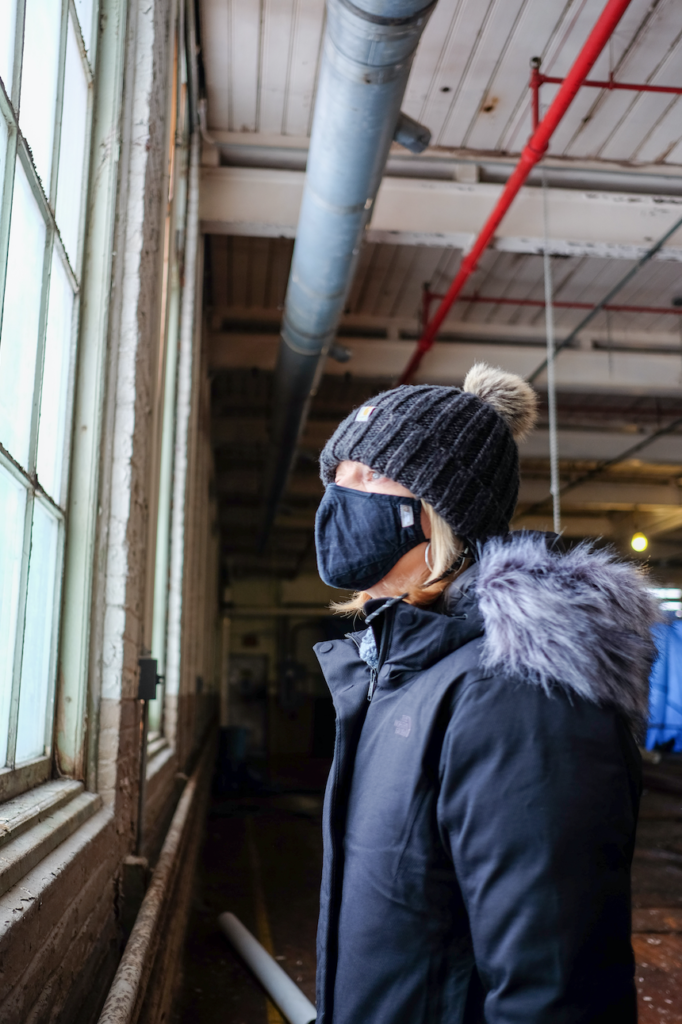
Historically, the Maine Spinning Company building is the last vestige of the dozens of industries, large and small, that were tightly grouped on Skowhegan Island and the banks of the Kennebec River. Architecturally, the exterior remains almost exactly as it was built, when it represented a new era of industrial design that took into consideration worker needs, as well as industrial efficiency.

Preserving this downtown building is extremely important to Skowhegan as we continue to build on our past and connect it to our future. It is one of the most visible structures in the downtown area and is directly adjacent to the Skowhegan Historic District, a homogeneous and cohesive grouping of 38 architecturally and/or historically significant buildings, most dating from 1880 to 1910. This district encompasses the main commercial area, including the most southerly block of Madison Avenue and the two westernmost blocks of Water Street. All major styles of the period are represented, including the work of architect John Calvin Stevens, architect of Skowhegan’s Municipal Building and Opera House and more than 1,000 other buildings in the state of Maine.
Skowhegan is also one of ten nationally designated Main Street communities in Maine, using a strategic four-point approach to downtown revitalization, a program developed by the National Trust for Historic Preservation.
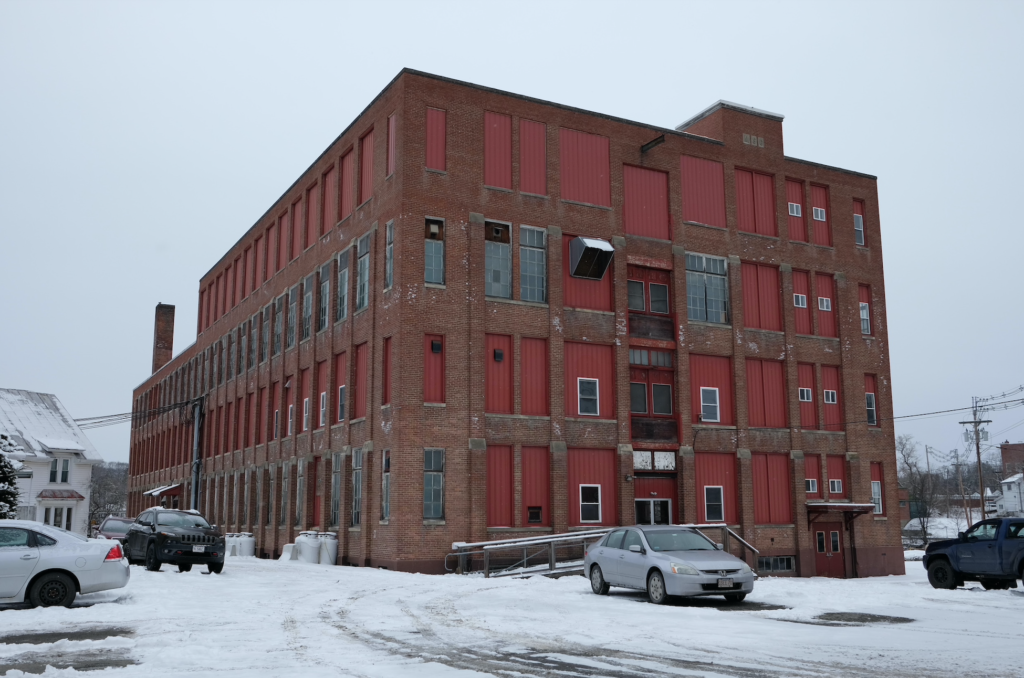
As we reenergize our community by celebrating who we are and where we came from, we are developing a pride of place through education and by informing our citizens of their unique place in Maine’s economic and cultural development. The Maine Spinning Mill is one of the most visible icons of this effort. Once this historic building re-opens as the new home of Bigelow Brewing Company in 2021 (hopefully), the building will enter a new phase of its nearly 100-year presence in the heart of Skowhegan’s downtown, continuing the ongoing history of our town’s ever-evolving social and economic fabric and preserving an important piece of the town’s architectural heritage.
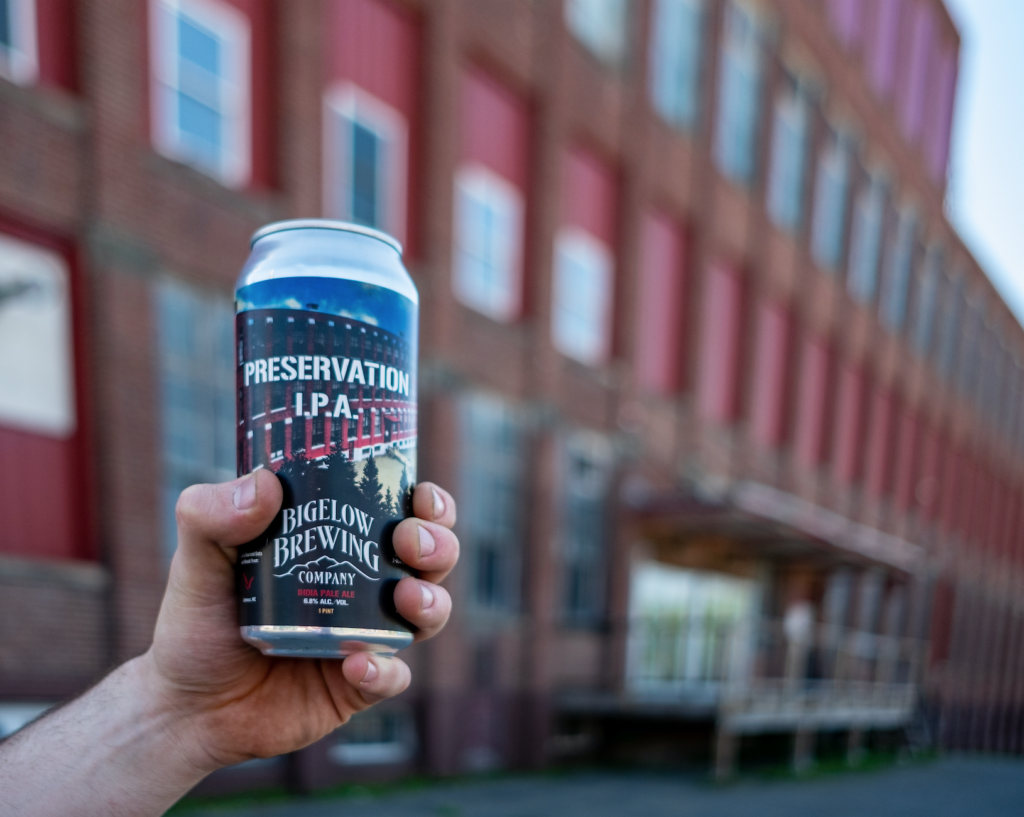
Bigelow Brewing developed this beer as their community engagement project of the National Park Service historic preservation grant they received to develop plans for the rehabilitation of their new home in downtown Skowhegan.
We want to express our immense gratitude for everyone involved with this momentous project, including the Maine Downtown Center, the National Park Service, the Maine Development Foundation, and the Maine Historic Preservation Commission.
Cheers to an exciting future!


2 thoughts on “Preservation IPA”
You two are amazing. Skowhegan has so much to be proud of and you are a major part of this.
I think its great that you are preserving this historic building. I will continue to huy your great beer & to support the causes you support. Looking forward to the opening of the future brewery